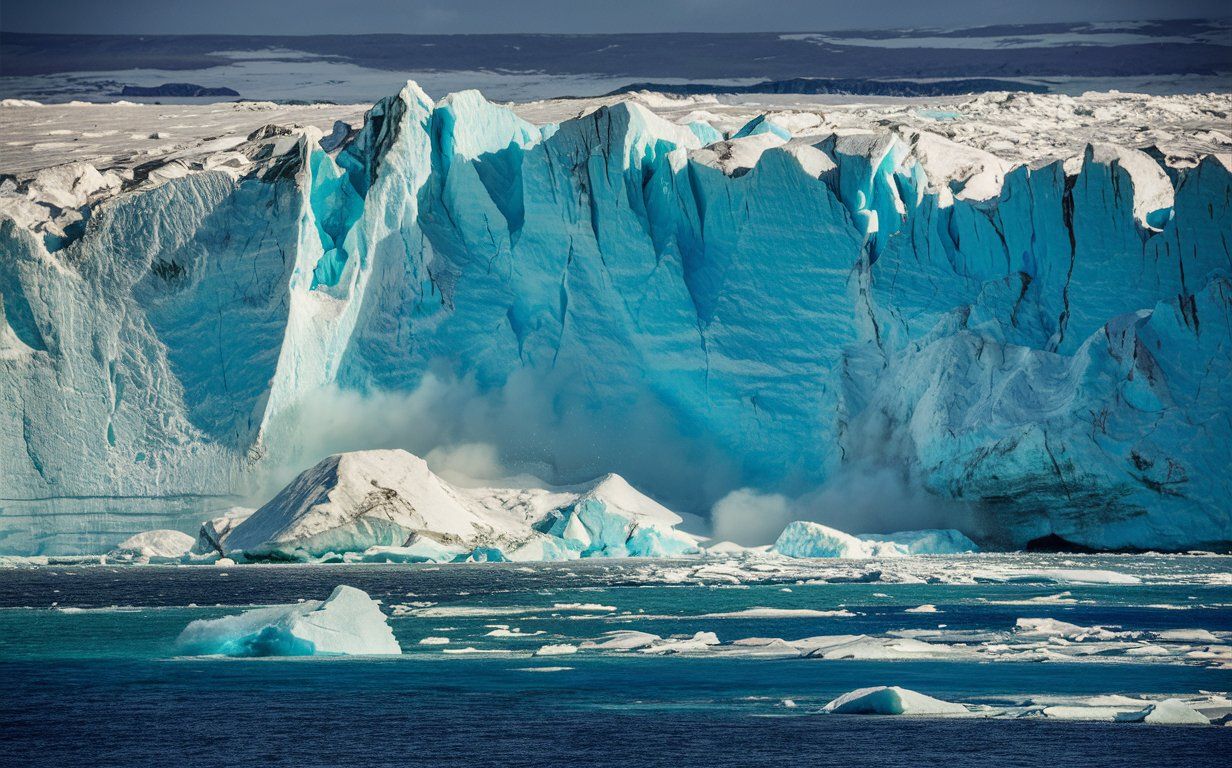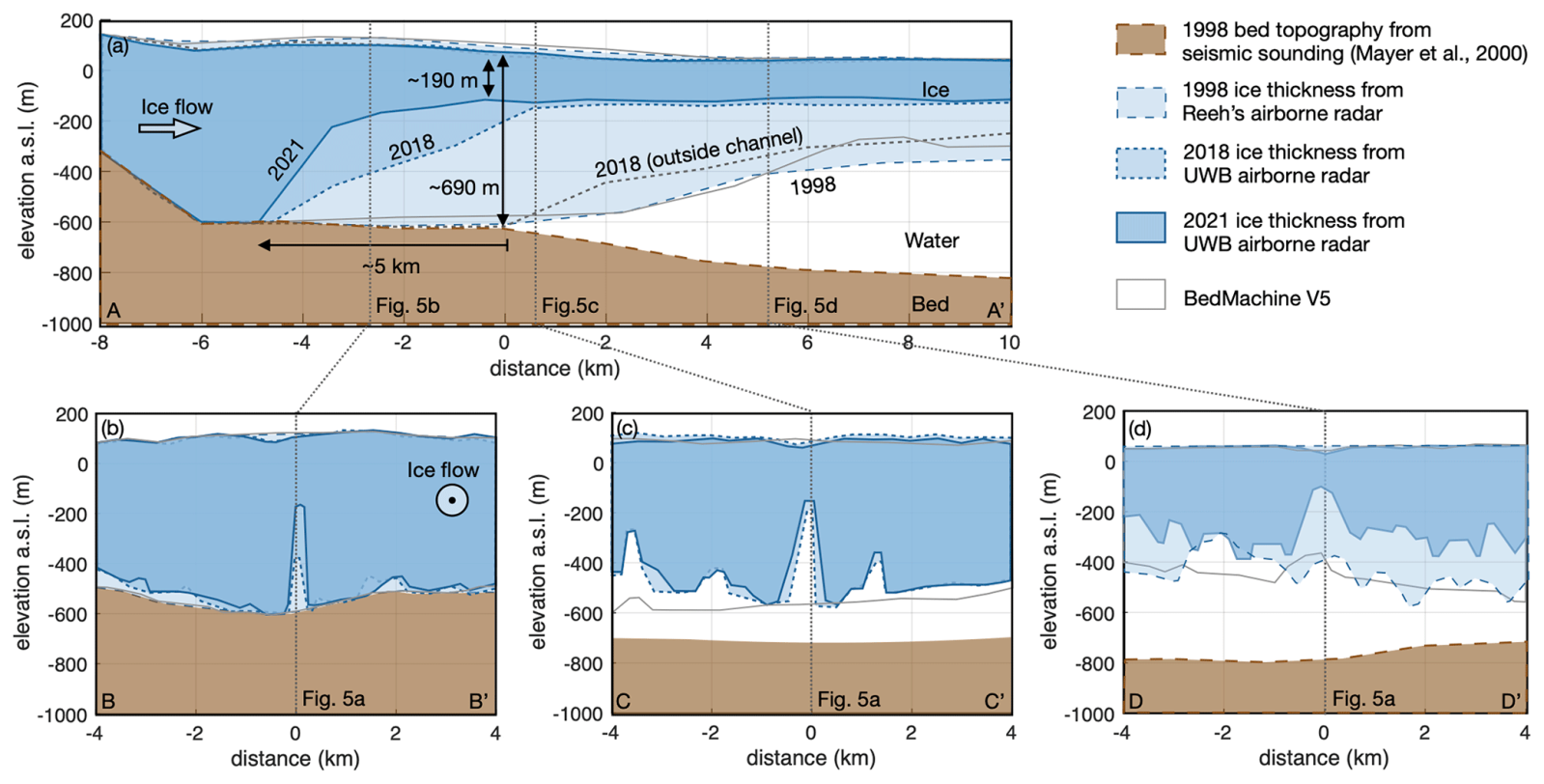A massive Greenland glacier is literally melting before our eyes
Follow us on Google News (click on ☆)

High air temperatures lead to the formation of surface lakes, whose water flows through enormous channels in the ice to the ocean. One of these channels reaches a height of 1,640 feet, while the ice was only 623 feet thick. This results in an under-ice flow along the rock to the ocean.
This phenomenon has been studied using autonomous measuring devices deployed by helicopter on a hard-to-reach part of the 79° North Glacier, as well as through measurement flights with the AWI polar aircraft and satellite data.
This study illustrates the impact of global warming on the stability of the floating ice tongue. The reduced stability generally leads to an acceleration of ice flow, thereby increasing sea level.

Measurements of the ice tongue thickness, in 1998, 2018, and 2021
Observations indicate extremely high rates of melting across a large area close to the transition to the ice cap. Furthermore, the large channels forming under the ice, likely due to the flow of water from giant lakes through the glacier, have significantly thinned the glacier in recent decades.
Since 1998, the ice of the floating glacier tongue has thinned by 32%, especially from the grounding line where the ice comes into contact with the ocean.
The study highlights the importance of monitoring these changes to understand the processes before a possible dislocation of the glacier, thus providing a valuable database for the scientific community.